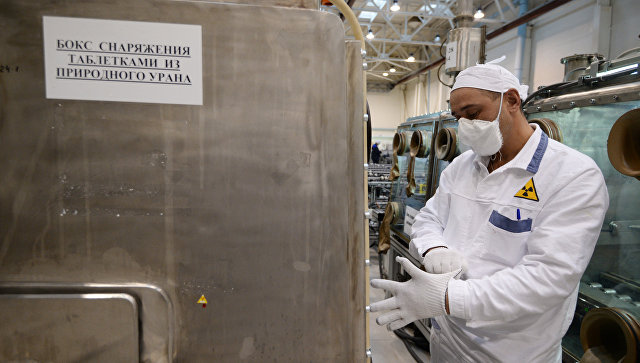MOSCOW, December 14 - RIA Novosti. Physicists from the Moscow Physical-Technical Institute and the Joint Institute for High Temperatures found the behavior of nuclear fuel with the appearance of defects in its crystal lattice, which will increase the life spans "of uranium tablets," according to an article published in the International Journal of Plasticity.
"We have taken an important step on the way to the description of complex processes, such as swelling and embrittlement of nuclear fuel during its operation entirely based on computer modeling," - said Sergei Starikov, MIPT and JIHT employee whose word the press service of Physical-Technical Institute.
Nuclear fuel, like all other energy sources, changing its chemical composition and properties during use. As burnout ratio of uranium atoms and oxygen it changes significantly, and these changes, coupled with the interaction of radiation with shells "tablets" of uranium dioxide, lead to noticeable changes in the form of fuel cells and release of chemically active molecules.
Many of these changes take place for the reason that the uranium dioxide crystals, "compacted" into these tablets, change their shape in uranium decay within them, or in groups of neighboring atoms. Understanding how come these strains and how they affect the "swelling" of nuclear fuel, it is essential to ensure the safety of the reactor, as the changes in the geometry of the crystals affect not only the shape of the tablets, but also on how the reactions of nuclear fission inside it.
Russian physicists have uncovered some details of the process that will help to make the fuel more durable and safe, creating a computer model of the crystal of uranium dioxide, changing its shape under the influence of the decay of the atoms, temperature fluctuations and other external forces.
These calculations showed that the structure of uranium dioxide crystals can change at very high temperatures - 700 degrees Celsius or more - in two different ways. Accounting for these processes in the design of nuclear reactors and fuel cells for them, and their further study using a model Starikov and his colleagues as the authors hope will help make nuclear power even safer.




No comments:
Post a Comment